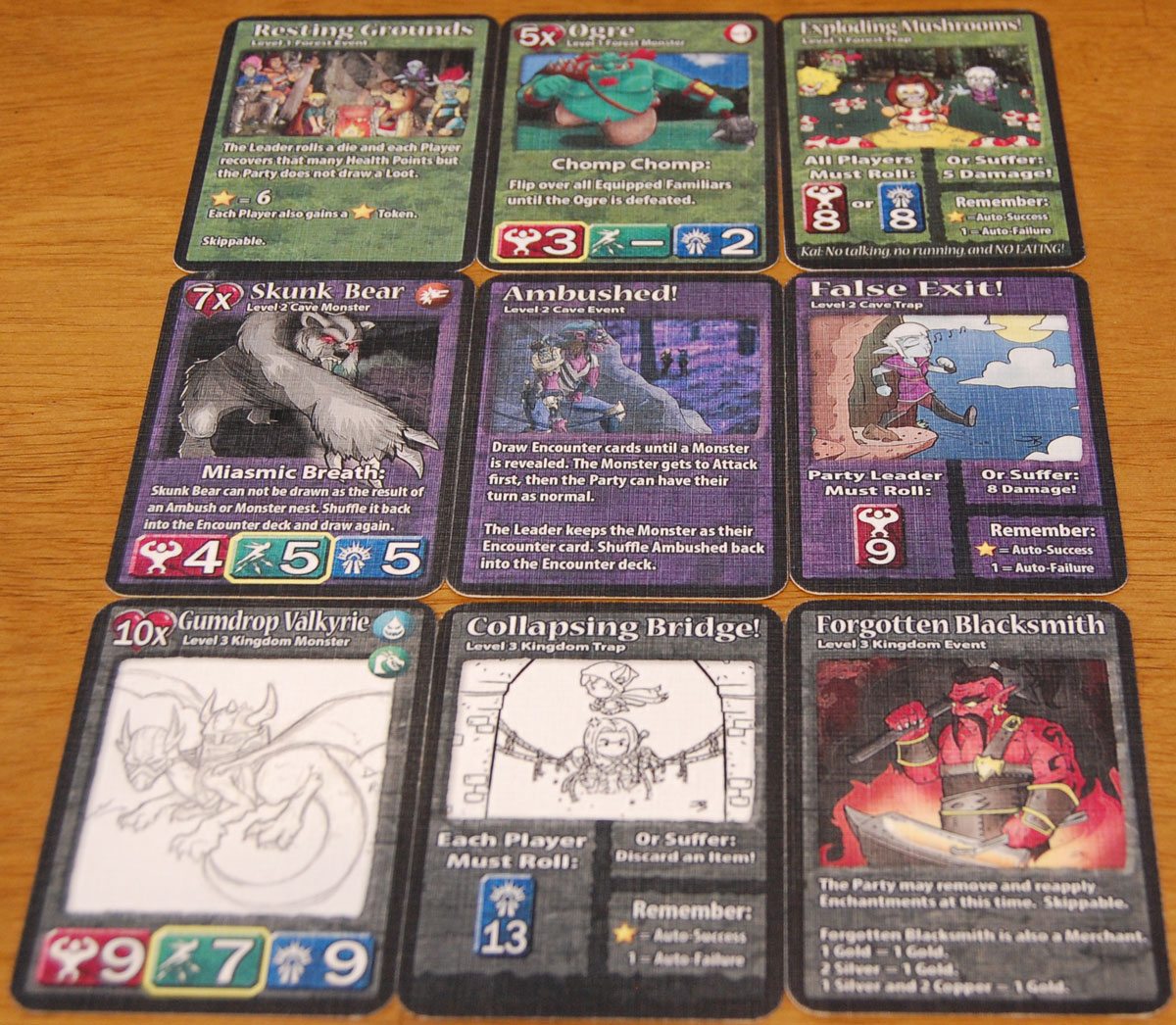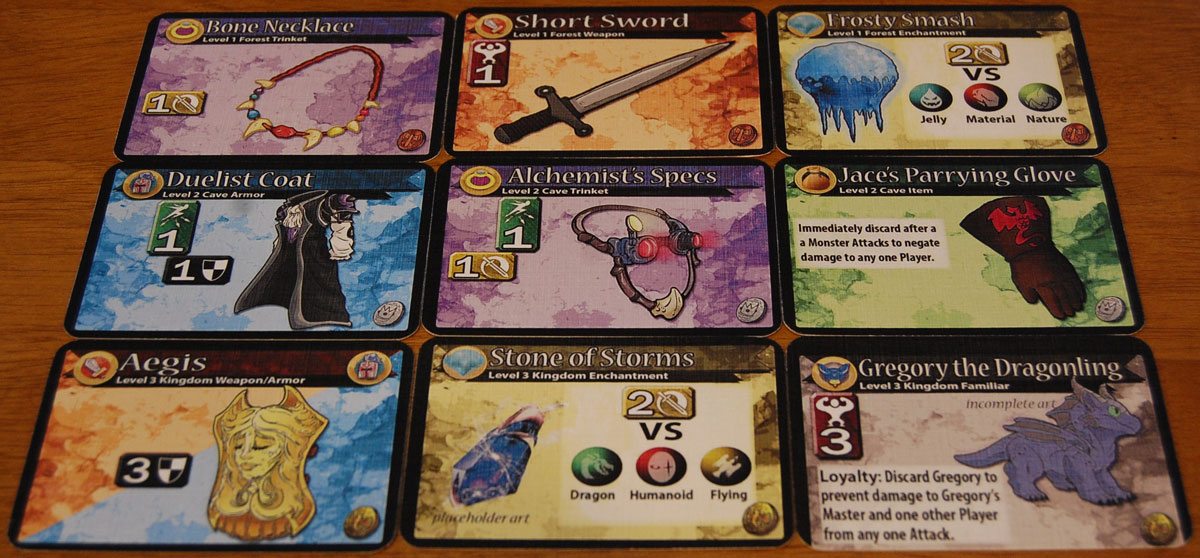
Random Encounters is described by its creators as a “simple, quick co-op RPG card game.” It is, as that description states, a fairly quick game and it relies on very simple mechanics that mean you aren’t constantly looking things up in the rules or on complex tables. The game is for 1-4 players and takes about 20 minutes per player. It is officially recommended for ages 13 and up, but I didn’t find anything in the game that would be a problem for younger players (although there are small pieces). It is currently active on Kickstarter, and a pledge of $39 or more will get you a copy of the game.
Disclaimer: I was given a prototype copy of the game to test out for this review.
New to Kickstarter? Check out our crowdfunding primer.
Components
- 9 Character Cards
- 75 Encounter Cards
- 75 Loot Cards
- 9 Boss Cards
- 1 Leader Token
- 6 Life Gems
- 12 Star Tokens
- 4 Custom Dice
- 54 Skill Tokens

Gameplay
After selecting characters, either at random or by simply picking the character you want, all players roll to see who the first “party leader” is. To begin, each player draws a Level 1 “loot” card, which can be used to equip your character and increase one of their skills. Then, players draw a “boss” monster from the appropriate level deck.
The game proper begins with the party leader drawing an encounter card and then dealing with it. The encounters are either traps, which require a simple skill roll to prevent damage, events that require a roll and are generally helpful, or monsters that the characters have to fight. Each monster and each character has three skills they can use in fights: strength, agility and magic. Most of the time, the player can simply pick the skill that is strongest, but some monsters may be immune to certain skills, forcing you to use another one.
Combat is simple: after picking the skill you wish to use, you roll a special D6 (there is no 6 on it–more on that later) and add up the total of the skill, the roll, and any equipment bonuses. The monster takes damage equal to its corresponding skill value minus the player’s total. Assuming that the player did not defeat the monster on that roll, the next character then takes a turn.
Once all players have had a chance to fight the monster, it gets to fight back (as long as it survived the players’ attacks.) Combat here is just as simple: using its indicated fighting skill, the party leader rolls the die again and adds the total to the monster’s skill. That result is then subtracted from each character’s corresponding skill, resulting in that number of damage points to the character.

This process repeats until the monster is killed. The leader keeps the monster’s card, and draws loot for the encounter. Leadership is then passed to the next player, and the above steps of drawing an encounter, fighting the monster or otherwise dealing with the encounter, and drawing loot are repeated until each player has two encounter cards, at which time the players deal with the boss monster.
The boss monster battles follow the same basic template, with a few minor exceptions. The monsters are of course much stronger, and often have special abilities that make things even harder. In addition, the party leader changes after each round of combat when fighting the boss.
At the completion of the level, all character health is restored. Each player draws a level 2 loot card. Characters can also choose a single ability and increase its value. Players can also sell items between levels, which allows them to basically dump the lower level equipment for more useful higher level stuff.
The missing six on the die, by the way, is a star. Rolling this when dealing with traps counts as an automatic success when handling traps. When fighting, the star allows the player to reroll, unless they have a character skill that says otherwise. Event cards will specify what happens when a star is rolled.
The game, as the name implies, relies on a lot of luck, but there are elements of strategy along the way. Each character has a special leader ability that activates when they are party leader, and often choosing to use this can impact the outcome of an encounter. On occasion, players may draw loot that requires that they discard a piece of loot before they can equip their character with the new loot.
Players also get a star token that they can use during a round to change a die roll to a star, but once used they do not get another one until a new level begins so care must be taken when choosing to use it. However, if they do not spend it they do keep it for the next level, so it is possible to end up with three of them by the final battle.
There are a few other unique elements to the game. Most monsters’ beginning health points are dependent on the number of players, so level 1 monsters aren’t necessarily easy to kill off with large parties.

Verdict
Random Encounters turned out to be quite a lot of fun. It is simple enough to appeal to non-gamers, and as such might serve as a nice gateway game to more complex fantasy games for your group. The game doesn’t take itself too seriously, so there is sure to be a lot of laughter at the table while you play. My favorite part, though, was the incredibly simple mechanics. While I’m not stranger to highly complex games, it was nice to take a bit of a break from constantly digging through dense rules and simply draw cards and roll dice.



